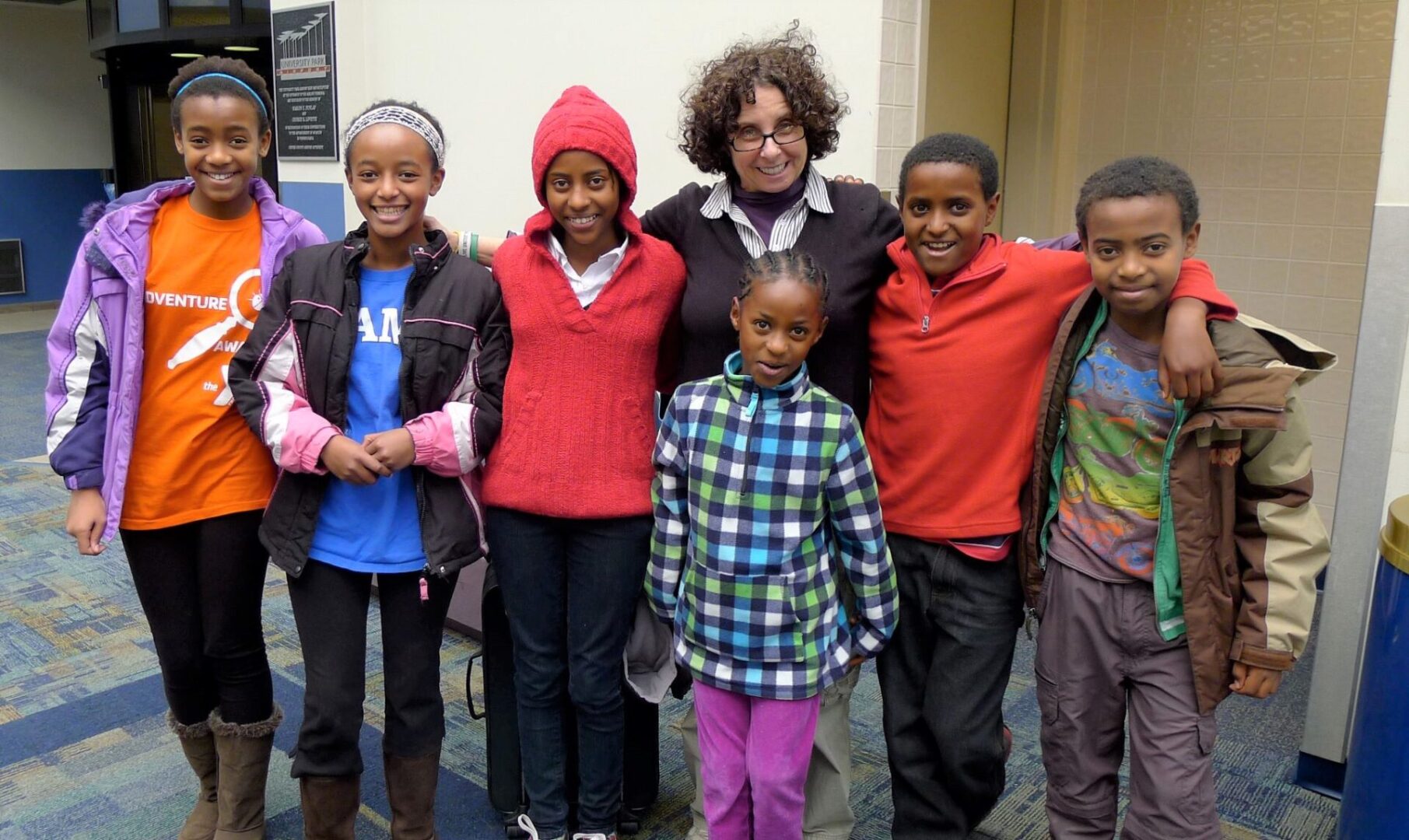Happy Valley restaurants will be filled with Mother’s Day gatherings this Sunday, but no mom will deserve gifts or kind words from her kids any more than Susan Strauss.
Strauss first became a mother at the age of 55 when she adopted three children from Ethiopia in early 2010. Then, due to her big heart and some unusual circumstances, this remarkable single woman adopted three more Ethiopian kids in late 2011.
Six kids in two years? All from unstable family backgrounds and a very different culture? None of them able to speak more than a few words of English? Wow.
“Many people said, ‘Six—you’re crazy,’” recalls Strauss, a Penn State professor of Asian studies and applied linguistics.
TOUGHNESS AND TENDERNESS
To be honest, I wouldn’t recommend such an endeavor to most people—even those with a supportive spouse. But Dr. Susan Strauss ain’t most people. She is a rare combination of tenderness and tenacity.
As her daughter Mihret says, “I can’t express how appreciative I am that my mom adopted six kids in the span of two years, despite the challenges she encountered and criticisms like, ‘You are crazy.’ My mom fulfilled her dream because she has a passionate heart and the drive to do anything she sets her mind to. Six kids who adore her to the fullest filled her arms in just two years and the many years to this day.”
Thus it gives me great pride and joy to designate Dr. Susan Strauss as Happy Valley’s “Mother of the Year,” an award I give each year before Mother’s Day. Susan joins a group of amazing moms who have been previously honored:
- Sue Paterno was the initial selection, chosen in 2019. Not only did the wife of Joe Paterno raise five children and send them all to Penn State, but she gave motherly support and one-to-one tutoring to at least 60 of her husband’s football players.
- Kim Sublett, my choice in 2020, is the mother of three biological children and six adopted children. Her mothering skills also show up big-time in the life of Calvary Church Penns Valley where her husband, Stacy Sublett, is the pastor.
- Lydia Abdullah, the 2021 honoree, is the mother of two and grandmother of three. She is legendary for the motherly hugs she has dispensed at home, in her church (Unity Church of Jesus Christ) and on the Penn State campus where she served as a staff member for 42 years.
- Joyce Porter, last year’s selection, has raised 14 kids—nine biological and five adopted—including two sets of twins and one child with special needs. Her love for kids is boundless.
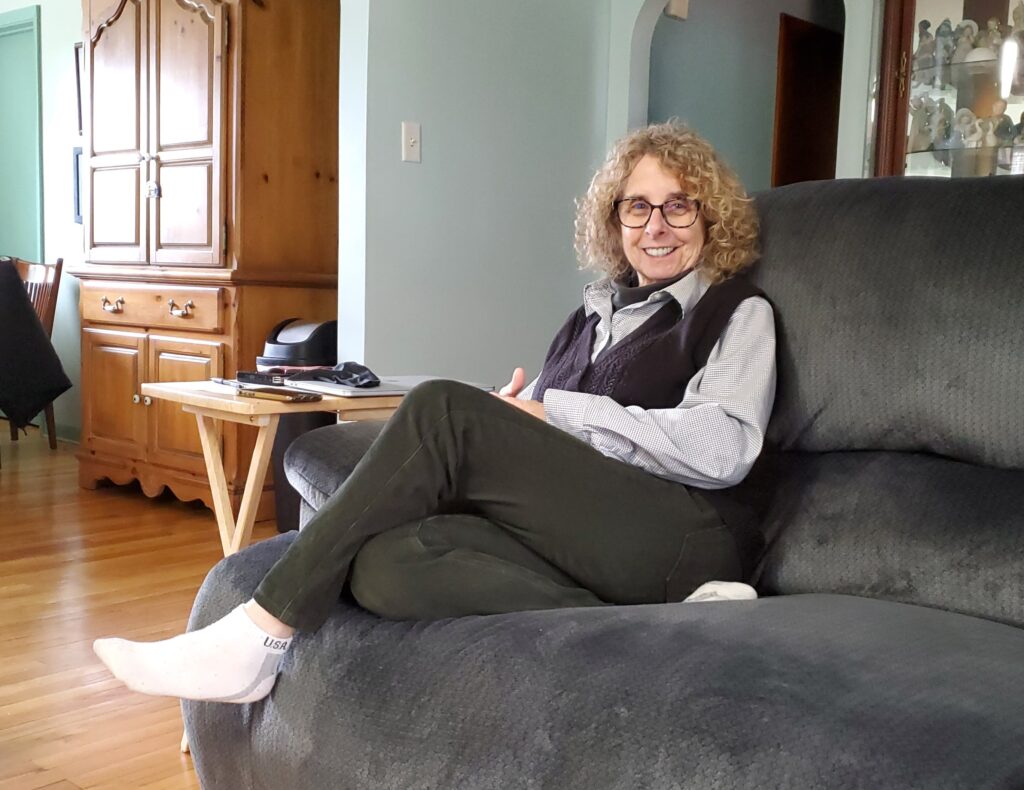
PURSUING ADOPTION
So how in the world did Susan Strauss set out to adopt multiple children from Ethiopia? Asked that question, Susan thinks back to her undergraduate studies in the early 1970s. “I was a French major at Cal State Northridge,” she says, “and I came to know a little about Josephine Baker (a French dancer, singer and actress). She adopted 12 kids from all around the world, and they called them the ‘Rainbow Family.’ And I thought, ‘What a really cool idea.’ Although I was only gonna adopt one.
“So after I got this job (teaching at Penn State), I decided I would do everything I could to make it through the tenure process and then start the application process for adoption.”
After receiving tenure in 2005, Strauss began working on adoption plans and by 2007 she had begun the application process to adopt one child from Ethiopia. Why that nation? It was one of the few countries that allow singles to adopt and one with a high population of orphans. Plus, she adds, “While I was at UCLA (where she earned her doctorate in applied linguistics) I had studied Amharic a little bit.”
ONE BECOMES THREE…OR ZERO
By March of 2009, Strauss received her referral to a little Ethiopian girl named Terefech. Then, in May, she was told that Terefech’s sister, Adanech, and brother, Biniyam, were also available for adoption. Although the Penn State prof carefully weighed this increased challenge, she soon gave the “Yes” answer that her close friends would have predicted.
After all, Susan Strauss is known to have a big heart for people with needs. And she’s also a quiet adventurer—the teenage girl who rode her motorcycle all over Southern California; the woman who left her job in commercial construction management to begin graduate school at age 35.
But a terrible and unexpected thing happened to block the process of adopting Terefech and her older siblings. In July of 2009, the agency in Ethiopia reported that they had gained some new information: the three children would not be adoptable for at least a year—if ever.
By this time, Susan had begun a heart relationship with the three children (then ages 4, 7 and 9), sending photos and gifts to them. But there was no guarantee, so she pursued a peripheral path of adopting a separate sibling set of three kids. Yes, three. By now Strauss had become convinced that older adoptees who were entering a new culture would do better with sibling support.
SAD ENCOUNTER SPARKS IDEA
In January, 2010 Susan flew to Ethiopia to pick up the new group of adoptees–her daughters, Tenaye and Mihret, and her son, Bereket. But a painful moment took place at the adoption agency’s transition home when she encountered the three children she had first attempted to adopt.
Due to photos that had previously been exchanged, Susan recognized Terefech, Adanech and Biniyam and they recognized her. “We greeted each other,” recalls Susan, “but that was all. They were not adoptable. The situation was cruel on all sides.”
But as the Penn State professor left the transition home with her three young children, another adoptive mother said, “Susan, turn around. A little girl’s been following you all the way from the door to the gate.”
That little girl was Terefech, and she was wearing a white dress that Susan had sent her before the July phone call. “I knelt down and hugged her,” says Susan, “and then I took the other three children across the road to the agency office. I said, ‘If Terefech, Biniyam and Adanech ever do become adoptable, please give me first priority.’”
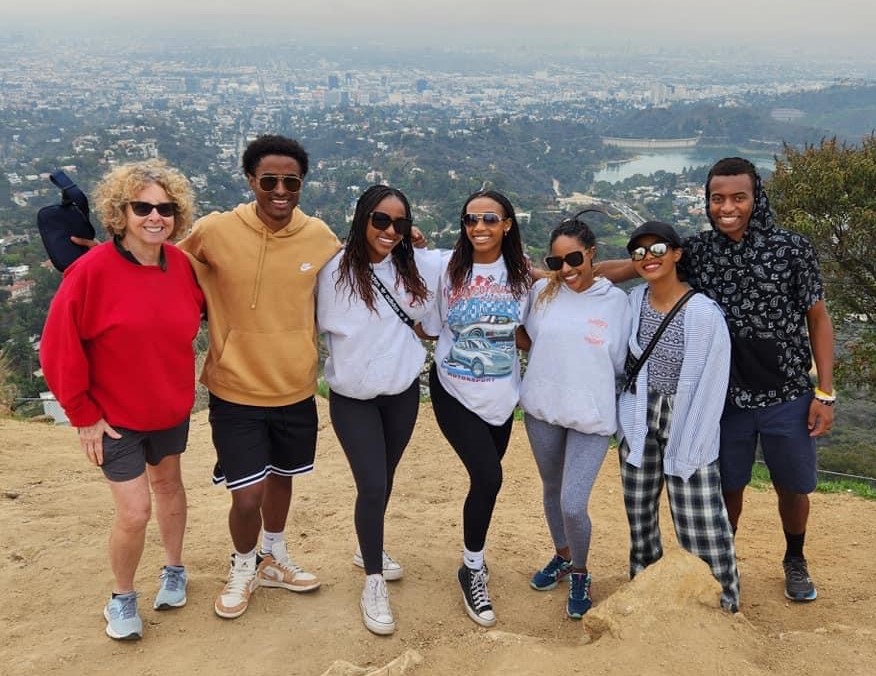
ARRIVING IN STATE COLLEGE
The flight home from Addis Ababa was exhausting but uneventful for Susan and her three youngsters. But then they landed at University Park Airport and she began the process of helping her children feel at home in Happy Valley. The first few days were fine, says Susan. “We had snow. They went outside to play and they had their new jackets. They thought it was exciting.”
And then they had to start school—a harrowing experience for Tenaye, Bereket and Mihret. Not only did they speak virtually no English, but says Susan, “they had no numeracy skills and no literacy skills. They didn’t know the days of the week or the months of the year. They had received hardly any prior education.”
And, of course, almost all the other students at Easterly Parkway Elementary School were white, so no wonder the Strauss kids felt extremely uncomfortable after one day. In fact, all three refused to go to school on the second day. What was their mother going to do?
Fortunately, Susan had appealed to a kind man from her neighborhood, and he arrived to help carry the kids to her car. Two had changed out of their pajamas at the last minute, but the most strong-willed insisted on wearing PJs to school. Off they went, but Susan wisely packed a set of proper clothes for that child. “I knew the kid would want to change,” says Susan. “And on top of that, all three kids refused to take their coats to school.”
CONTEST FOR CONTROL
Alas, this stressful trip to school was just one event in an ongoing contest for control. “My first three kids were raised in a family in Addis Ababa where there wasn’t a lot of adult supervision,” says Susan. “And then when they got to the orphanage, they had a lot of freedom. So it took them a while to get used to structure. It was very hard for about seven months—by far the hardest thing I’d ever undertaken.”
But the Southern California native had significant resources at her disposal. Her master’s degree was earned in teaching English as a Second Language, so she could double down on the TESOL instruction the kids got at Easterly Parkway. And, having studied some Amharic during graduate school, she dusted off her vocabulary and used key words to build bridges to the kids.
As for cultural adaptation, Susan took the kids to Unity Church where they could be around folks who looked like them and, no doubt, get hugs from Lydia Abdullah. Susan also met with the church’s pastor, Harold McKenzie (subject of my most recent column) who connected her with other adoptive parents.
Under constant pressure to understand three struggling children in addition to the stresses related to her work, Strauss availed herself of counseling from Rachel Foster Love, a local psychologist. And she also read the book, “How to Raise Your Defiant Child,” relevant because the children were temporarily turning to defiance as a way to cope with change.
The book, says Strauss, stressed the importance of making one’s point through non-verbal means. And that was especially handy at bedtime. “I would say goodnight to them,” she recalls, “and kiss them good night. Then they would be talking and staying up late. So I put a chair outside and I just sat in the hallway so they would know I was there. But when I turned off the light, they would get up and turn it back on. So I would turn it back off and they would turn it on again.
“Then this one time, I got my step stool and I took the light bulbs out of the sockets. So what did they do? They found the closet light and turned it on. Then I took that bulb away. So I got to win but non-verbally.”
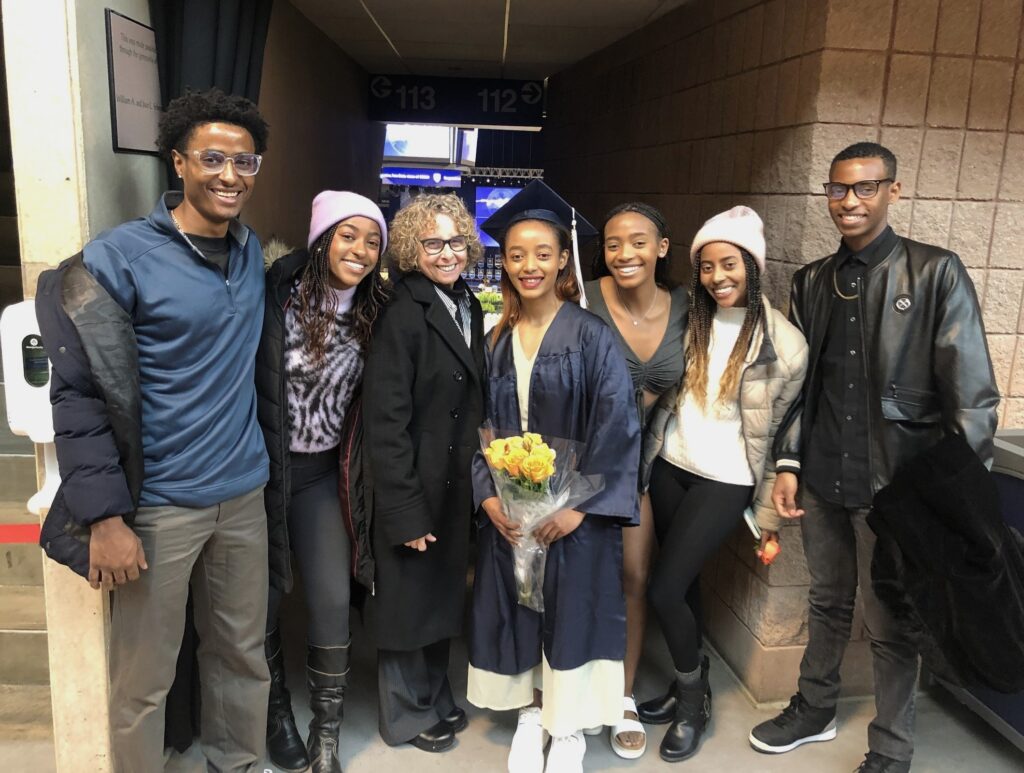
THREE BECOME SIX
Amazingly enough, her initial struggles with Tenaye, Mihret and Bereket did not dissuade Susan from adoptive pursuit of Adanech, Biniyam and Terefech. Why? She had grown to love them during the adoption correspondences from 2009. And she had retained her own capacity to overcome barriers in pursuit of others’ welfare. After all, this is a woman who wrote her entire doctoral dissertation in six weeks so her mother—approaching death with a brain tumor—could attend her hooding ceremony before passing away.
To be sure, there were barriers in the way of adopting this second set of three siblings. First, the Ethiopian adoption agency wasn’t certain that a single person could care for three more children. And then, even though the birth parents had relinquished their rights to these kids, some work needed to be done in affirming the legality of the adoption. Strauss got it all done—not only by paying a boatload of money for an attorney but also by doing lots of her own research.
Of course, Susan also discussed this possibility with the first three kids during a series of family meetings. They were completely supportive—partly because they knew the other children and partly because they felt an injustice had been done to those three kids.
So it was that Susan Strauss returned to the Addis Ababa adoption transition center in November of 2011 to claim the other half of her precious brood. (Friends cared for the first three children during her time away.)
Susan treasures many memories from that trip, but perhaps her favorite is from her time with Biniyam during the flight home. “He said, ‘Oh Mom…’ And then he kind of showed off by spelling Pennsylvania. He could hardly speak any English, but he could spell Pennsylvania. I’m sure he practiced and practiced. It was so sweet.”
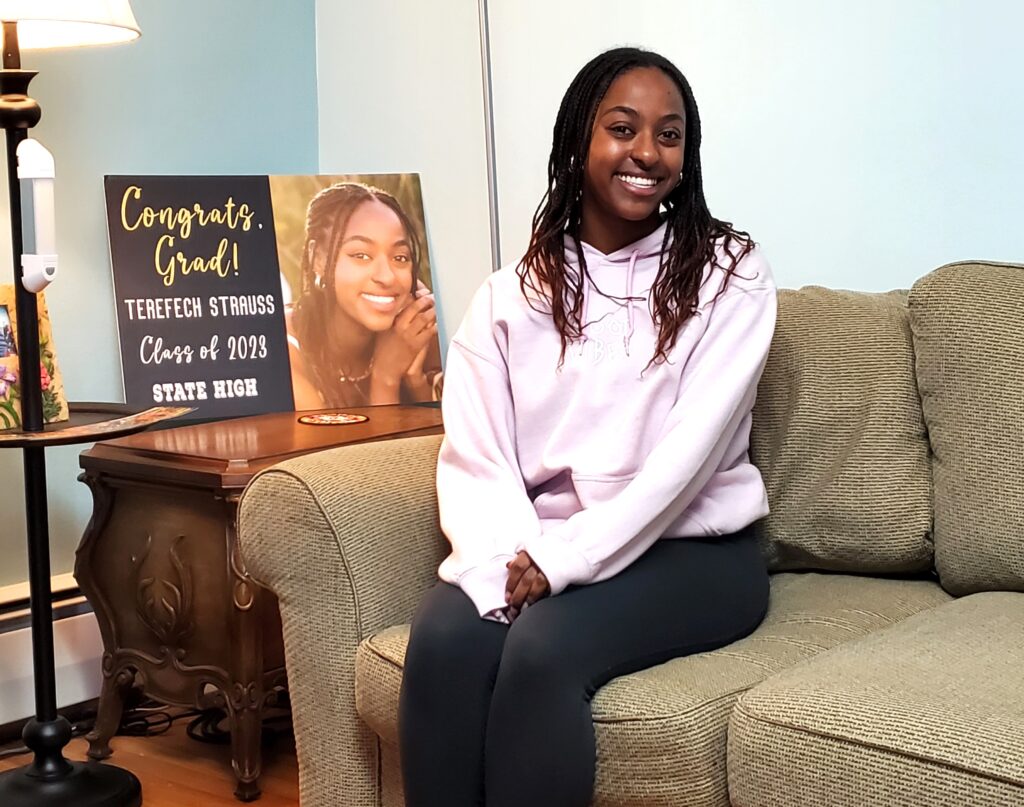
SMOOTH TRANSITION, ONGOING SUCCESS
Although the first seven months in America had proved extremely difficult for Tenaye, Bereket and Mihret, things were completely different for the second group of three. “I thought it was going to be even harder for me,” says their mom. “But when the second three kids came, it was just so much easier.”
By that time, the first three kids were already settled and into their routines. And they were able to serve as informal coaches for the second three—explaining American customs and lending an additional sense of security. “They still had a lot of things to get used to,” Strauss says of the more recent arrivals, “but it wasn’t as extreme.”
In some ways, Strauss and her children had conquered the greatest emotional adjustments by early in 2012. So Susan could give greater focus to her kids’ unique educational needs. At first, she struggled to find elementary school programs that would give both remedial instruction and a particular emphasis in TESOL. Fortunately, she discovered Nittany Valley Charter School, a great solution because of its smaller class size. Then as the kids grew older, various options (Delta Program High School, St. Joseph’s Catholic School and State High) matched individual needs. Our 2023 Mother of the Year can rightly be proud of her six grown children and their achievements thus far:
- Tenaye, a St. Joseph’s grad, became the first from the Strauss family to earn a degree from Penn State when she claimed her bachelor’s degree last December in criminology with a minor in TESOL.
- Adanech (“Addie”) graduated from State High and is now studying at Penn State.
- Mihret graduated from the Delta Program and is now a Penn State student.
- Biniyam (“Binny”) graduated from State High and is now working full-time while studying for his realtor’s license.
- Bereket graduated from the Delta Program and is now a Penn State student.
- Terefech, a member of National Honor Society, will graduate from State High next month and will enter Penn State this summer.
Meanwhile, the Strauss kids are just as proud of their mom as she is of them. All of them shared loving comments with me, but perhaps Bereket provided the best summary: “Even to this day, I still can’t imagine raising six children alone. But my mother imagined it and said, ‘I can do it.’ I could sit down and tell you how much we appreciate our mother from dawn till dusk, but that’s another Mother’s Day story.”
